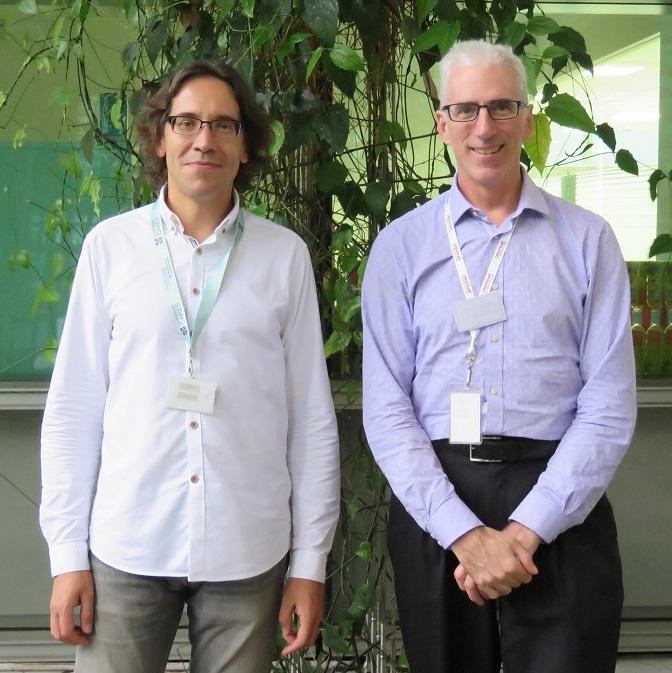
Joint research programme will focus on how to convert carbon dioxide to useful chemicals
A three-year programme will bring together researchers from the University of Cambridge, the University of California, Berkeley, the National University of Singapore (NUS) and Nanyang Technological University (NTU) to develop ways of transforming carbon dioxide (CO₂) emitted as part of the industrial process into compounds that are useful in the chemical industry supply chain. Singapore’s National Research Foundation approved funding of S$5m (£2.8m) for the eCO₂EP project within the Intra-CREATE programme, which will start in January 2018. It will be co-led by Prof. Alexei Lapkin, from Cambridge’s Centre for Advanced Research and Education in Singapore (CARES Ltd), and Prof. Joel Ager, from the Berkeley Education Alliance for Research in Singapore (BEARS Ltd).
The aim of the eCO₂EP project is to produce a “table-top chemical factory” that uses electrochemical processes to convert CO₂ into ethylene or to 1-propanol – two molecular products widely used in the chemical industry. Earlier research carried out at CREATE has demonstrated that CO₂ molecules can be transformed into hydrocarbons through the application of electricity. Intra-CREATE’s research will, among other things, study the viability of large-scale CO₂ reduction processes, including the use of off-peak renewable electricity in areas with excess capacity. Speaking about the eCO₂EP project, Prof. Lapkin said: “This project will allow us to test a number of hypotheses on the new energy-chemistry solution for a more sustainable future. We will work on integrating electrocatalysis and separation techniques to build a mini-plant, as our test-bed. It will generate crucial data for environmental and techno-economic analysis of this technology, which we see as an essential element of future energy systems.” Prof. Ager added: “We see an exciting opportunity to use excess electricity to drive value-added chemical processes and look forward to working with Cambridge, NTU, and NUS to translate our laboratory innovations to commercial scale.
Prof. Chris Abell, the University of Cambridge’s Pro-Vice-Chancellor for Research, and a member of the CARES governing board, said: “This is a very significant step in the development of our research interests in Singapore. It arises out of, and builds on the success of our C4T CREATE project.” Dr Khiang Wee LIM, Executive Director of the Campus for Research Excellence and Technological Enterprise (CREATE), said: “This partnership between the University of Cambridge, University of California Berkeley, Nanyang Technological University and the National University of Singapore is an example of the potential for great science and engineering from the collaborations made possible at CREATE.”
CARES and BEARS are part of the Campus for Research Excellence and Technological Enterprise (CREATE), based in NUS’s University Town area. Now celebrating the 10th anniversary of its formal establishment, CREATE was set up by the government of Singapore to be a hub of interdisciplinary research for scientists collaborating to address problems of environmental, urban and energy sustainability. Other universities with research centres in CREATE are ETH Zurich, MIT, TU Munich, the Hebrew University of Jerusalem and Shanghai Jiao Tong University.
CARES, a wholly-owned subsidiary of the University of Cambridge, hosts a number of research collaborations between the University of Cambridge, NTU, NUS and various industrial partners. Its flagship Cambridge Centre for Carbon Reduction in Chemical Technology (C4T) is a partnership between Cambridge and Singapore to measure and reduce the carbon footprint of the integrated petro-chemical plants and electrical network on Singapore’s Jurong Island. It brings together researchers from Chemical Engineering, Biotechnology, Chemistry, Biochemistry, Information Engineering, Electrical Engineering, Materials Science and Metallurgy.

